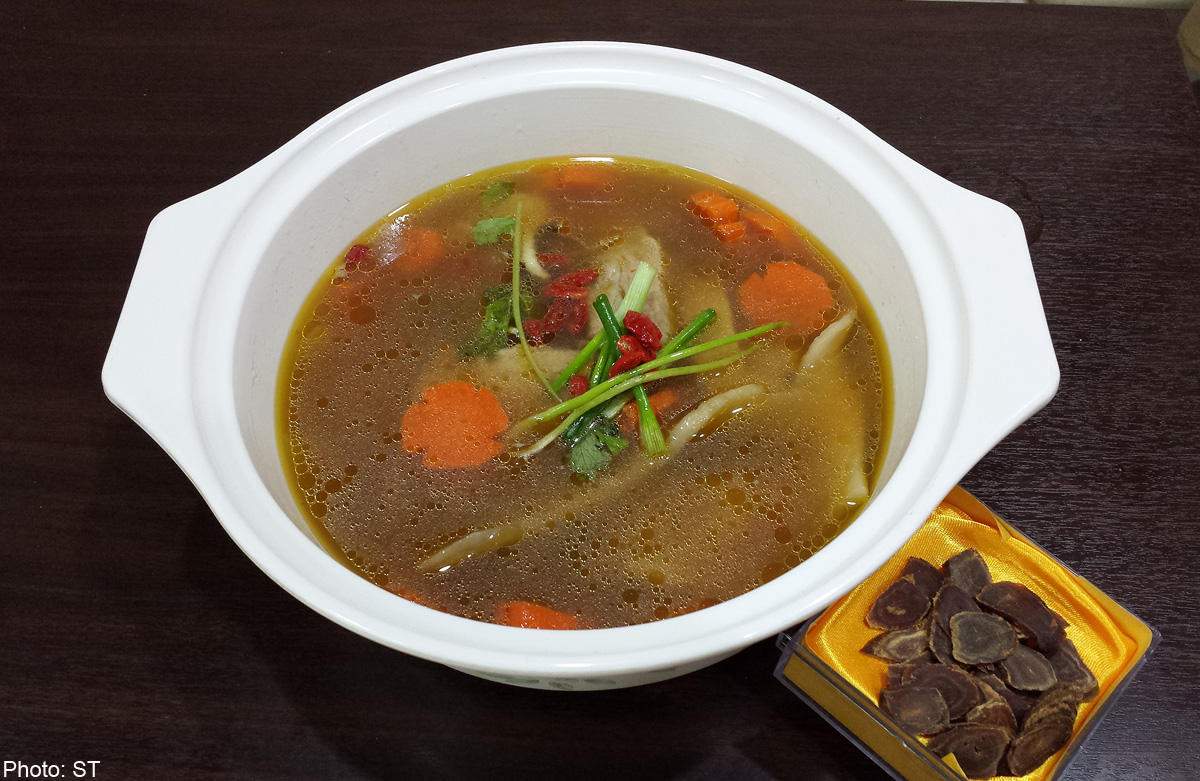Ginseng pork soup is a culinary treasure that combines the invigorating essence of ginseng with the rich flavors of pork, creating a dish that is both comforting and invigorating. This ancient recipe has been passed down through generations, revered for its restorative properties and delectable taste.
Let us embark on a culinary journey to unravel the secrets of this timeless soup.
Whether you seek a comforting meal on a chilly evening or a nourishing tonic to replenish your vitality, ginseng pork soup is an exquisite choice. Its versatility allows for customization, catering to various dietary preferences and taste buds. Join us as we delve into the intricacies of this culinary masterpiece, exploring its ingredients, preparation, and tantalizing variations.
Ingredients

Gather the essential ingredients to create a flavorful and nourishing ginseng pork soup:
For the broth:
- 1 pound pork bones (such as neck bones, shoulder bones, or ribs)
- 8 cups water
- 1 tablespoon cooking oil
- 1 large onion, chopped
- 4 cloves garlic, minced
- 2 inches fresh ginger, sliced
For the ginseng:
- 6 slices dried Korean ginseng
- 1/2 cup jujube berries
For the pork:
- 1 pound pork belly, cut into 1-inch pieces
For seasoning:
- 2 tablespoons soy sauce
- 1 tablespoon rice wine (or Shaoxing wine)
- 1 teaspoon salt
- 1/2 teaspoon black pepper
Optional or Garnish Ingredients
Enhance the soup’s flavor and presentation with these optional ingredients:
- Green onions, thinly sliced
- Sesame oil
- Goji berries
- Dried shiitake mushrooms
Preparation

To prepare the main ingredients for this flavorful ginseng pork soup, several key steps are essential. Firstly, the pork should be thoroughly cleaned and cut into bite-sized pieces. This ensures even cooking and optimal absorption of the soup’s flavors.
Additionally, the ginseng root should be carefully cleaned and sliced into thin pieces. This maximizes the release of its medicinal properties and delicate flavor into the soup.
Preparing the Condiments
To enhance the taste of the soup, a few condiments are typically used. Ginger should be peeled and sliced into thin strips, adding a refreshing and slightly spicy note to the soup. Garlic cloves should also be peeled and minced, contributing their savory and aromatic flavors.
Cooking Method
The ginseng pork soup is prepared using a slow-cooking method to extract the flavors and nutrients from the ingredients. The cooking process involves simmering the ingredients in a covered pot or slow cooker for an extended period.
Step-by-Step Instructions
To make the ginseng pork soup, follow these steps:
- In a large pot or slow cooker, combine the pork ribs, ginseng, garlic, ginger, and water.
- Bring the mixture to a boil over medium heat, then reduce the heat to low and simmer for 2-3 hours.
- Add the dates, goji berries, and honey to the pot and continue to simmer for an additional 30-60 minutes.
- Season the soup to taste with salt and pepper.
- Serve the soup hot with rice or noodles.
Variations
The versatility of ginseng pork soup allows for various adaptations to suit different preferences and dietary restrictions.
Experiment with different types of meat, such as chicken, beef, or lamb, to create a unique flavor profile. Vegetarians can substitute the meat with tofu or mushrooms.
Vegetables
Enhance the soup’s nutritional value by adding a variety of vegetables. Consider carrots, celery, onions, bok choy, or spinach.
Dietary Restrictions
For gluten-free options, use gluten-free soy sauce or tamari. For low-sodium diets, reduce the amount of salt or use low-sodium broth.
Presentation
The presentation of ginseng pork soup is crucial to enhance its appeal and create a memorable dining experience.
To achieve an elegant presentation, arrange the soup in a ceramic or porcelain bowl. The white or cream-colored background will provide a striking contrast to the rich brown broth and colorful ingredients.
Garnish and Accompaniments
Garnishes and accompaniments can elevate the soup’s visual appeal and complement its flavors.
- Scallions: Finely sliced scallions add a vibrant green color and a subtle oniony flavor.
- Cilantro: Fresh cilantro leaves provide a refreshing and aromatic touch.
- Red chili peppers: Thinly sliced red chili peppers add a hint of spice and vibrant color.
- Crispy garlic chips: Toasted garlic chips offer a crunchy texture and savory flavor.
- Pickled vegetables: Pickled vegetables, such as daikon radish or cucumbers, add a tangy and crunchy element.
Last Word
As we conclude our exploration of ginseng pork soup, let us reflect on its versatility and timeless appeal. This nourishing soup transcends culinary boundaries, offering comfort, nourishment, and a touch of tradition. Whether enjoyed as a restorative tonic or a hearty meal, ginseng pork soup continues to captivate taste buds and warm hearts.
Its adaptability allows for endless variations, ensuring that each spoonful is a unique and satisfying experience. As you embark on your own culinary adventure with this remarkable recipe, may it bring you warmth, nourishment, and a profound appreciation for the healing power of food.
Questions and Answers
Can ginseng pork soup be made ahead of time?
Yes, ginseng pork soup can be made ahead of time and reheated when ready to serve. Allow the soup to cool completely before storing it in an airtight container in the refrigerator for up to 3 days or in the freezer for up to 3 months.
Is ginseng pork soup suitable for all dietary restrictions?
Ginseng pork soup can be adapted to accommodate various dietary restrictions. For a vegetarian version, substitute the pork with tofu or shiitake mushrooms. For a gluten-free version, use gluten-free soy sauce or tamari. To make the soup low-sodium, reduce the amount of salt or use low-sodium broth.
What are the health benefits of ginseng pork soup?
Ginseng pork soup is believed to have numerous health benefits, including boosting the immune system, reducing inflammation, improving circulation, and promoting overall well-being. Ginseng is known for its adaptogenic properties, helping the body adapt to stress and maintain balance.
